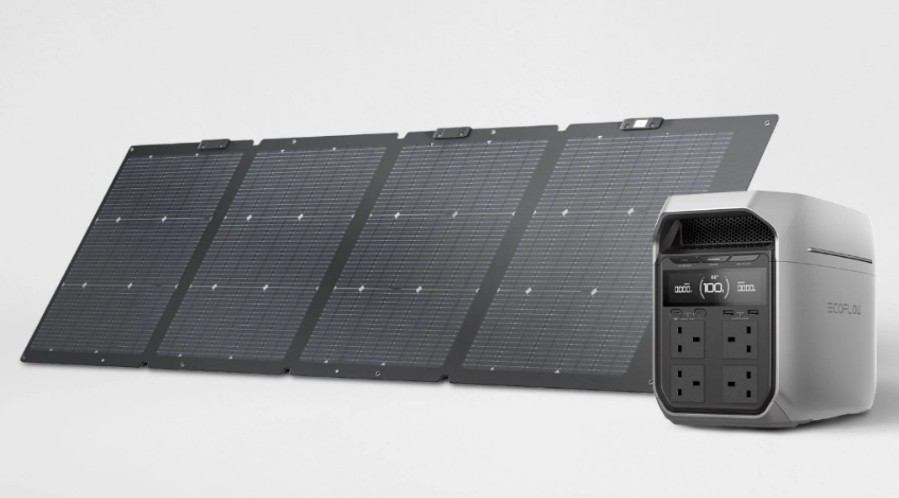The Ultimate Guide to Battery Voltage Charts for Beginners
A battery voltage chart represents a battery's voltage levels corresponding to its state of charge. Knowing how to read and utilize it can prevent unexpected power failures and prolong the lifespan of your valuable batteries. This guide will demystify battery voltage, explain the concept of state of charge and discharge, and provide comprehensive battery voltage charts for common batteries. Keep reading to discover details and essential maintenance tips to ensure optimal battery health and longevity!
What Is Battery Voltage? Why Monitor it?
Battery voltage refers to the electrical potential difference between a battery’s terminals. It’s a key indicator of a battery’s charge level and overall health. For instance, a fully charged 12V battery typically reads around 12.6 to 12.8 volts, while a reading below 12 volts often signals that the battery is discharged or deteriorating.
Monitoring battery voltage is essential for both safety and performance. It helps you avoid unexpected power loss, detect battery faults early, and prolong the lifespan of your battery by preventing deep discharges. Whether you're powering household devices, camping gear, or solar systems, being aware of battery voltage charts is a straightforward way to ensure your battery operates within safe parameters.
What Is the State of Charge & Discharge?
The state of charge (SoC) represents the current amount of electrical energy stored within a battery. It is expressed as a percentage of its total capacity. A fully charged battery has a 100% SoC, while an empty battery has a 0% SoC. Understanding SOC can help you know how much power is available for use. For example, when the SoC reads 20% or lower for your EV car, you know it’s time to power it up.
The State of Discharge (SOD) is basically the opposite of the State of Charge (SOC). It shows how much of the battery’s capacity has been used so far. The State of Discharge (SOD) is closely related to the Depth of Discharge (DoD), which measures the percentage of the battery’s total capacity that has been discharged. For example, if a battery has a DoD of 20%, it means 20% of its energy has been used, and 80% is still available.
In short, SoC focuses on “how much power is left”, which is a real-time power indicator; SoD focuses on “how much power has been used”, which is a historical consumption indicator. We can fully manage battery health and optimize usage efficiency when considering both.
Battery Voltage Charts for Different Battery Types
Keeping an eye on voltage helps maintain the lifespan and performance of your home battery system, especially if you're using a high-capacity setup to store and manage energy at home. In this section, you’ll find a detailed battery voltage chart for different types of batteries, including lead-acid, lithium-ion, LiFePO4, deep cycle, and AGM batteries.
1. Lead-Acid Battery Voltage Chart
Lead-acid batteries are among the oldest and most widely used rechargeable battery types. Known for their affordability and reliability, they are commonly used in automotive systems, uninterruptible power supplies (UPS), solar energy storage, and backup power applications. Here’s a battery voltage chart for a typical lead-acid battery, taken at rest (no load, no charging).
State of Charge | Flooded lead acid battery (6V) | Sealed lead acid battery (6V) |
100% | 6.32V | 6.44V |
90% | 6.26V | 6.39V |
80% | 6.20V | 6.33V |
70% | 6.15V | 6.26V |
60% | 6.09V | 6.20V |
50% | 6.03V | 6.11V |
40% | 5.98V | 6.05V |
30% | 5.94V | 5.98V |
20% | 5.88V | 5.90V |
10% | 5.82V | 5.85V |
0% | 5.79V | 5.81V |
2. Lithium-ion Battery Voltage Chart
Lithium-ion batteries are favored for their long cycle life, fast charging, and consistent performance. Unlike lead-acid batteries, lithium-ion cells maintain a more stable voltage during discharge. They are rechargeable batteries commonly found in smartphones, laptops, power tools, electric vehicles, and portable power stations. The readings may vary slightly depending on the specific battery chemistry and condition. Here’s a 12V car battery voltage chart for a resting lithium-ion one.
State of Charge | Voltage (12V Li-ion Battery) |
100% | 13.6V |
90% | 13.4V |
80% | 13.3V |
70% | 13.2V |
60% | 13.1V |
50% | 13.0V |
40% | 13.0V |
30% | 12.9V |
20% | 12.8V |
10% | 12.0V |
0% | 10.0V |
3. LiFePO4 Battery Voltage Chart
LiFePO₄ stands for Lithium Iron Phosphate. Therefore, LiFePO4 batteries are also called LFP batteries. They are a type of lithium-ion battery. Compared to standard lithium-ion batteries, LiFePO₄ batteries offer a flatter discharge curve and more consistent voltage, delivering them excellent thermal stability, long lifespan, and safety. They are commonly used in solar energy systems, RVs, marine applications, backup power stations, and electric vehicles. Below you can find a typical voltage chart for a 12V LiFePO₄ battery.


State of Charge | Voltage (12V LiFePO₄ Battery) |
100% (charging) | 14.6V |
100% (resting) | 13.6V |
99% | 13.4V |
90% | 13.3V |
70% | 13.2V |
40% | 13.1V |
30% | 13.0V |
20% | 12.9V |
17% | 12.8V |
14% | 12.5V |
9% | 12.0V |
4. Deep Cycle Battery Voltage Chart
Deep cycle batteries are designed to deliver consistent power over extended periods and are regularly discharged and recharged without damage. They pair especially well with a solar battery system for long-term, renewable energy storage and usage. You can also find them commonly used in off-grid setups, RVs, and marine equipment. Here is a 12V automotive battery voltage chart.


State of Charge | Voltage (12V Battery at Rest) |
99% | 13.00V |
90% | 12.80V |
80% | 12.75V |
70% | 12.50V |
60% | 12.30V |
50% | 12.15V |
40% | 12.05V |
30% | 11.95V |
20% | 11.81V |
10% | 11.66V |
0% | 11.51V |
5. AGM Battery Voltage Chart
AGM is the abbreviation of Absorbent Glass Mat. AGM batteries are a type of sealed lead-acid battery. Unlike a standard lead-acid battery, an AGM battery recharges faster and self-discharges more slowly. AGM batteries are known for their low maintenance, spill-proof design, and better resistance to vibration and temperature changes. They are widely used in backup power systems, mobility scooters, marine applications, and RVs. They are also ideal for off-grid and renewable energy setups. Below is the 12V battery voltage chart for your reference.
State of Charge | Voltage (12V Battery at Rest) |
100% (charging) | 13.0V |
100% (resting) | 12.85V |
99% | 12.80V |
90% | 12.75V |
80% | 12.50V |
70% | 12.30V |
60% | 12.15V |
50% | 12.05V |
40% | 11.95V |
30% | 11.81V |
20% | 11.66V |
10% | 11.51V |
0% | 10.50V |
Battery Maintenance Tips (So You Don’t Rely on Charts Alone)
While the battery voltage chart offers a snapshot of your battery's state, relying solely on voltage readings isn't a comprehensive approach to battery care. Consistent maintenance plays a crucial role in maximizing your batteries’ lifespan. Below are some easy-to-practice guidelines.
Charge Smartly: Avoid letting your battery drain completely before recharging. Try to keep it between 20%-80% as much as possible. Also, do not leave your battery plugged in at 100% for extended periods.
Avoid Extreme Temperatures: High heat or freezing conditions can degrade battery health and reduce the lifespan. So, store and use batteries in moderate temperatures within their recommended temperature range.
Use the Right Charger: Always use the manufacturer-approved charger to prevent power fluctuations that can harm the battery.
Keep Batteries Clean: A good method to maintain a strong connection is to ensure the contacts and ports are free from dust and debris. Regularly inspect battery terminals for corrosion and clean them with a wire brush.
Store Batteries Properly: If batteries will not be in service for long periods, store them with around 50% charge in a cool, dry place. You should also regularly take them out to recharge before the readings fall to 0%.
Conclusion
A battery voltage chart is a key indicator for understanding the state of charge of various batteries. Regularly referencing the appropriate battery voltage chart allows for proactive maintenance and helps avoid deep discharge. Additionally, you can also follow proper maintenance practices. Then, you’ll take your battery's reliability to a new level. They will surely operate efficiently and last longer.
FAQs
What voltage should a 12 volt battery be at?
It should read 12.8V for a healthy 12-volt battery when it is fully charged. It’s OK when it reads about 12.5 or higher. But you’d better check it within a few days and recharge immediately when it drops to 12.1 - 12.4V.
Is 14.7 volts too high on a battery?
A voltage of 14.7 volts is slightly above the expected range for actively charging a 12-volt lead-acid battery. But it does not always mean it's a cause for concern. You’d better monitor the charging process to ensure it doesn't remain at this high voltage indefinitely once the battery is fully charged.
What voltage is 50% of a 12V battery?
The voltage of a 12V battery at 50% state of charge depends slightly on the battery type. Typically, it reads approximately 12.0 to 12.2 volts for lead-acid (flooded, AGM, gel) batteries. The Lithium-ion is around 13.0 volts. The LiFePO4 readings fall to about 13.1 volts.
What is a good voltage for a battery?
It depends heavily on the type of battery and its state of charge. A good resting voltage for a 12-volt lead-acid battery is typically 12.6 volts or higher, indicating a healthy state of charge. For lithium-ion and LiFePO4, a resting voltage around 13.0-13.6 volts is a good sign.